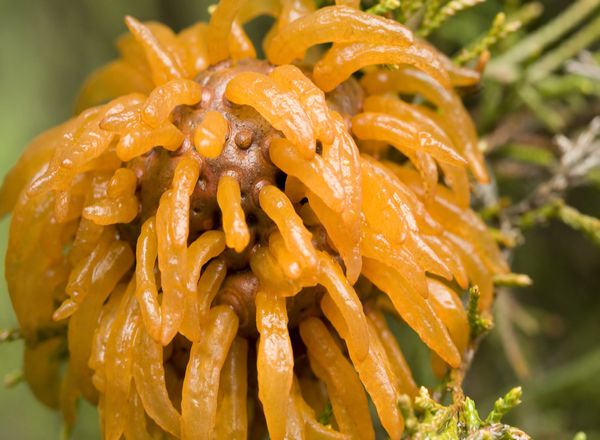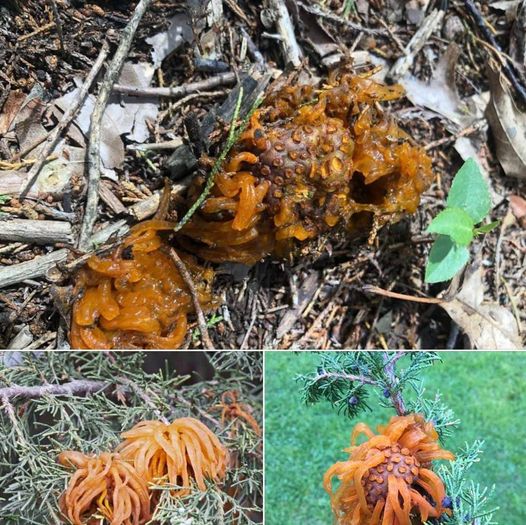
Taking care of plants in your backyard can be a fulfilling experience. It does, however, also provide a significant number of difficulties. You could occasionally come upon odd things that make you scratch your head. A Reddit member from Oklahoma recently discovered something strange in their trees: a large amount of yellow jelly and something they called a “jelly alien nut.” Perplexed and intrigued, they looked to the internet community for clarification.


Comprehending the Life Cycle
You may now be asking how long this illness persists. Well, seven months after the first illness, galls begin to form. They become gelatinous lumps after 18 months. The following spring, telial horns emerge from golf-ball-shaped depressions that grow on the galls. The brownish telial horns extend and turn bright orange in the springtime rain. Upon releasing their spores, the horns gradually collapse, get parched, and fall off. The galls are stuck to the tree for at least a year after they die. When the galls are covered with gelatinous masses in the spring, the infection is most visible.
Handling Apple-Cedar Rust
Thankfully, treating this infection is not too difficult. To stop the infection from spreading, you can trim off the affected parts. It’s important to remember that cedar-apple rust just harms the plants’ appearance; it won’t destroy your trees. You can choose apple cultivars that are resistant to this disease or use fungicides if you would rather take a preventative approach.
In summary
To sum up, while cedar-apple rust may be an uncommon sight in your backyard, your trees are not seriously threatened by it. It’s critical to understand this virus so that you can take appropriate action if it manifests. Spread the word about this knowledge so that others can identify and comprehend cedar-apple rust. Cheers to your successful gardening!
